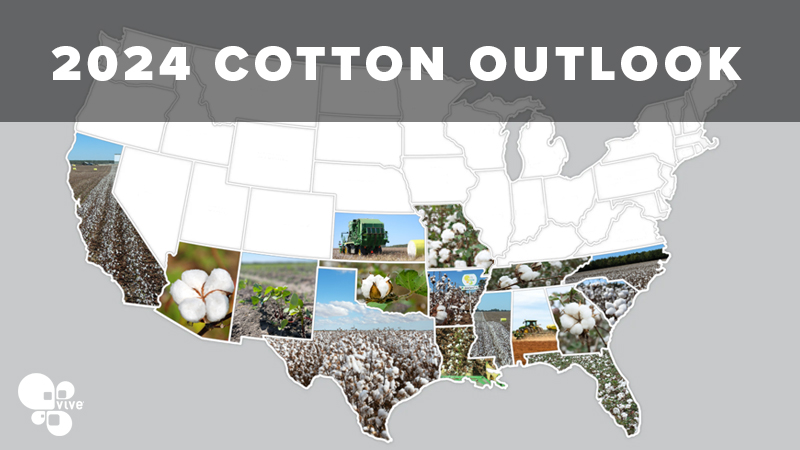March 7, 2024 - US cotton farmers face a unique set of challenges and opportunities as they prepare for the 2024 planting season. From market volatility to climate variability and technological innovations, the outlook for cotton planting in the United States in 2024 is characterized by a mix of uncertainties and potential for growth. In this article, we delve into the key factors shaping the cotton planting outlook for US agriculture and strategies for navigating the complexities of the upcoming season.

The US cotton market is influenced by a myriad of factors, including domestic and international demand, trade policies, and global economic conditions. In 2024, US cotton farmers will need to closely monitor market trends and consumer preferences to make informed planting decisions. Shifts in trade dynamics, currency fluctuations, and consumer behavior could impact prices and market demand. As a result, farmers may need to adapt their planting strategies to align with changing market conditions and maximize profitability.
The Environmental Protection Agency's decision to remove dicamba from the market will undoubtedly have significant implications for cotton growers across the United States. Dicamba, a widely used herbicide in cotton farming, has been a crucial tool for managing weed resistance and maintaining crop yields. However, concerns regarding off-target drift and its adverse effects on neighboring crops have prompted regulatory action. For cotton growers, this decision represents a major setback, as they will need to explore alternative weed management strategies and potentially incur higher costs associated with adopting new herbicides or implementing alternative weed control methods. Additionally, the timing of this regulatory change poses challenges for growers who have already made planting and input decisions for the upcoming season, necessitating quick adjustments to their agronomic practices and potentially impacting their overall productivity and profitability.
Farmers must contend with unpredictable weather patterns and extreme events such as droughts, floods, and hurricanes, that ultimately affect crop planting schedules, crop yields, and overall profitability. To mitigate risks associated with climate variability, US cotton farmers can adopt resilient farming practices and leverage innovative technologies.
The adoption of technology and innovation plays a crucial role in shaping the future of US cotton farming. In 2024, US farmers have access to a wide range of digital agriculture solutions, including satellite imagery, drones, and precision farming technologies. These tools enable farmers to make data-driven decisions, optimize input use, and improve overall efficiency and productivity. One of the precision farming advancements cotton growers have adopted is the increased use of Precision Chemistry crop protection products like Averland FC nematicide and Viloprid FC 1.7 insecticide from Vive Crop Protection.
Sustainability is increasingly important in US agriculture, with consumers, retailers, and policymakers demanding more environmentally friendly and socially responsible production practices. In 2024, US cotton farmers will need to prioritize sustainability initiatives to meet growing market demands for sustainable cotton products. Implementing practices such as conservation tillage, cover cropping, and integrated pest management can help farmers enhance soil health, conserve water, and reduce environmental impact.
The outlook for cotton planting in 2024 presents US agriculture with both challenges and opportunities. To navigate the uncertainties of the upcoming planting season successfully, US cotton farmers must stay informed about market dynamics, adapt to changing weather patterns, embrace technological innovations, and prioritize sustainability initiatives. By adopting resilient and sustainable farming practices, US cotton farmers can mitigate risks, enhance productivity, and contribute to a more sustainable and profitable future for the US cotton industry and agriculture as a whole.
